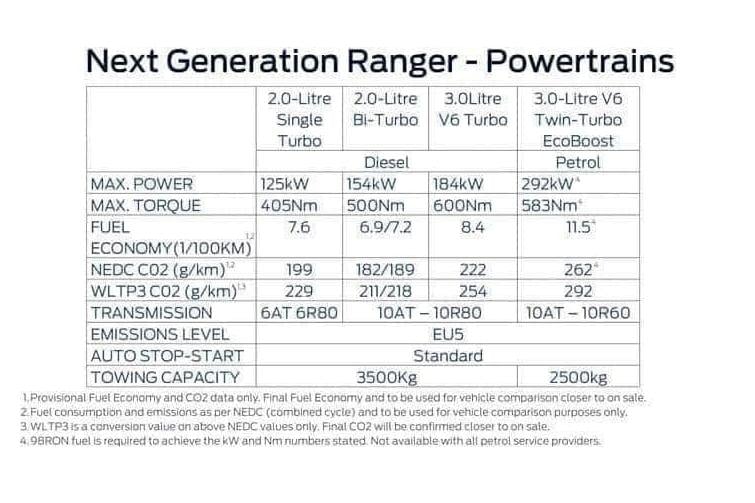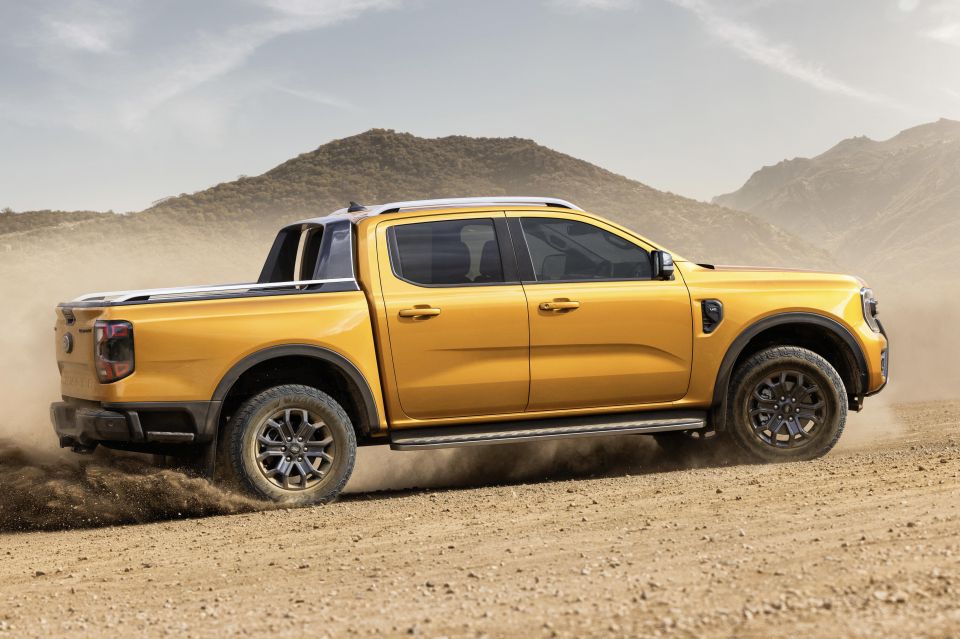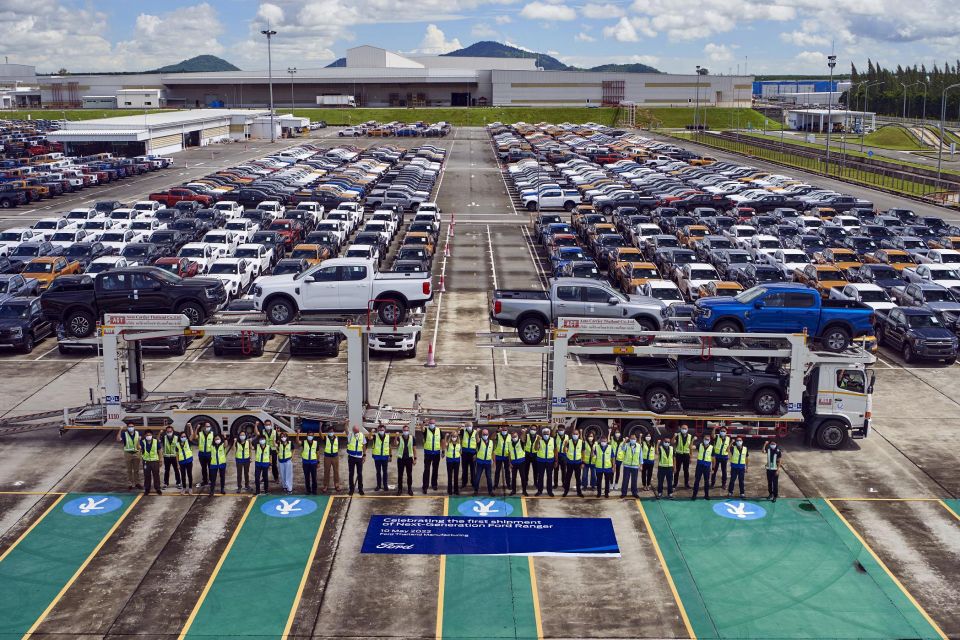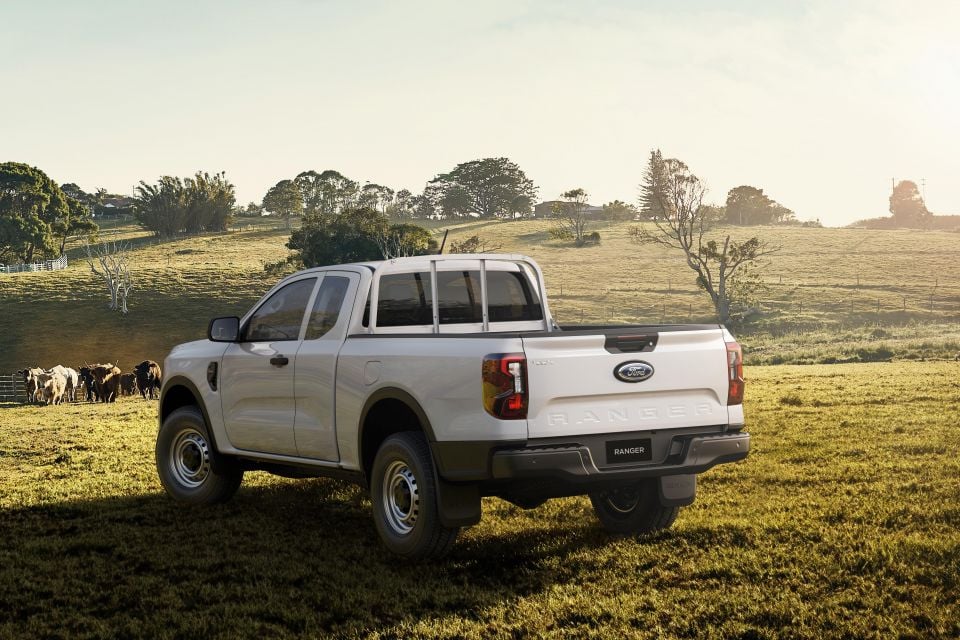

Ben Zachariah
CarExpert's top five ute reviews of 2025
1 Day Ago

News Editor
The next-generation Ford Ranger may be losing its most fuel-efficient variant, but the rest of the range doesn’t appear to be getting any thirstier.
Preliminary fuel economy figures for the next Ranger have been shared on social media.
CarExpert understands these are figures for ASEAN markets such as Thailand, but are largely representative of what the local figures will be.
Local figures are understood to be in the process of being finalised and will be released soon, ahead of deliveries beginning in June.

With the new single-turbo 2.0-litre turbo-diesel four-cylinder engine, the Ranger has claimed combined cycle fuel consumption of 7.6L/100km.
That’s a drop from the 7.8L/100km and 8.0L/100km claims of outgoing 2.2-litre turbo-diesel variants, the larger number being for Double Cab models.
There’s no longer a parsimonious manual option, however – the outgoing Ranger sips 6.5L/100km in manual single cab-chassis Low-Rider guise, but the new Ranger will be offered exclusively with an automatic transmission in Australia.

Stepping up to the carryover 2.0-litre bi-turbo diesel four, the table shows preliminary figures of 6.9L/100km and 7.2L/100km. The former is likely for the manual option that won’t be sold here.
In contrast, the outgoing bi-turbo Ranger uses 7.4L/100km as a Super Cab, 8.0L/100km as a Double Cab, and 8.2L/100km in flagship Raptor X guise.
The caveat here is this table lists automatic stop/start as being standard, however only selected fleet vehicles with the bi-turbo will be available with the fuel-saving feature.
Prior to losing automatic stop-start earlier this year due to the chip shortage, bi-turbo Double Cab models had a claimed fuel economy of 7.4L/100km.

The new 3.0-litre turbo-diesel V6 option is as thrifty as the outgoing, considerably less powerful 3.2-litre turbo-diesel five, with a claimed consumption of 8.4L/100km.
Finally, the Ranger Raptor – which packs a 3.0-litre twin-turbo petrol V6 – consumes 11.5L/100km.
Automatic stop-start is standard on the 3.0-litre V6 turbo-diesel and 3.0-litre V6 twin-turbo petrol engines.
As mentioned, the new Ranger will go on sale in June.

The hot Raptor will follow in July, while the related Everest SUV will come in August.
Although Ford has commenced mass-production and shipping of the new Ranger, a leaked dealer bulletin revealed COVID-19 lockdowns in China will result in dealers having fewer examples of the new Ranger to sell than initially forecast.
“As a flow on effect of production loss from Q2, a portion of the April Dealer allocation (for July production) will now need to be dedicated to build existing Dealer orders from earlier allocations, decreasing the volume available to allocate to Dealers in April,” said the bulletin late last month.
Earlier in April, Ford revealed full pricing for the Ranger range. You can read our detailed price and specs article here.

The core range starts at $35,930 before on-road costs for the XL single-cab-chassis in standard high-rider body-style, and extends to $70,190 before on-road costs for the Wildtrak with the meaty V6 turbo-diesel.
The turbo-petrol V6-powered Ranger Raptor is priced from $85,490 before on-road costs.
The 2022 Ford Ranger line-up consists of XL, XLS, XLT, Sport, Wildtrak and Raptor variants, and there are four engine choices all exclusively mated with automatic transmissions.
The headliner diesel is Ford’s 3.0-litre turbo-diesel V6 that produces 184kW of power and 600Nm of torque. A revised 2.0-litre bi-turbo diesel four-cylinder makes 154kW (down 3kW) and a familiar 500Nm, while the base 2.0-litre turbo-diesel four-cylinder makes 125kW and 403Nm.

Where available, the V6 diesel costs $3000 more than the 2.0-litre bi-turbo four-cylinder alternative.
The new-gen Ranger Raptor switches the out the bi-turbo four-cylinder diesel for a 3.0-litre twin-turbo V6 petrolengine that produces 292kW and 583Nm.
MORE: 2022 Ford Ranger: First batch leaves factory for Australia MORE: 2022 Ford Ranger: Initial stock levels cut due to COVID MORE: 2022 Ford Ranger price and specs MORE: 2022 Ford Ranger: Every model’s payload, GVM, and GCM MORE: Everything Ford Ranger
Where expert car reviews meet expert car buying – CarExpert gives you trusted advice, personalised service and real savings on your next new car.
William Stopford is an automotive journalist with a passion for mainstream cars, automotive history and overseas auto markets.


Ben Zachariah
1 Day Ago


Matt Campbell
2 Days Ago


Derek Fung
5 Days Ago


Damion Smy
8 Days Ago


Ben Zachariah
10 Days Ago


James Wong
16 Days Ago